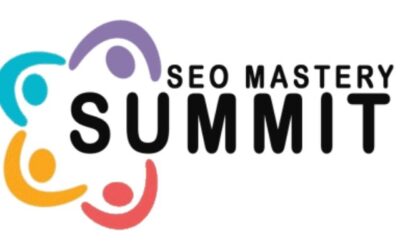Introduction & General Features
What is an ecommerce Website?
An ecommerce website is a website that sells products and services online. The site allows users to browse and purchase items, and typically features a shopping cart and checkout system. Ecommerce sites often use a payment gateway to process payments.
An ecommerce site is an online store where you can buy or sell products and services.
Many ecommerce platforms offer a professional online store builder that helps you launch your e-commerce store quickly and successfully.
Choose the Right Ecommerce system that matches your expectations and fulfills your business needs.

Good ecommerce site designs should have key elements like clear navigation, seamless user experience over web tab and mobile interface, effective information architecture, optimized product landing pages, easy checkout, faster payment processing, and good customer support. In short, we can club these features into four must-have features for every ecommerce web store –
1. Mobile responsive.
2. Customization opportunities.
3. Easy-to-follow site navigation.
4. Unique user experience.
What are The Benefits of Having an Ecommerce Website?
There are many benefits of having an ecommerce site. Some of the benefits include:
– Increased sales and revenue
– 24/7 availability
– Improved customer satisfaction
– More efficient order processing
– Increased customer loyalty
Premium ecommerce themes are bug-free, SEO-optimized, and fully secure. Building a fully custom ecommerce website costs more but can be faster and less expensive with an approach headless development.
To design an ecommerce site you need to plan, conceptualize, and arrange your content and products for effective display on the Internet.
How to Build an Ecommerce Website?

Building an ecommerce site is a complex process that requires a lot of planning and forethought.
The first step is to come up with a plan for your website. This plan should include the structure of your website, the design, the products you will sell, and the payment processing you will use. Having said that, prior to the website plan comes the budgeting and researching the pros & cons of hiring an application development team to build web & mobile apps or would you like to do the development on your own.
Buy A Suitable Domain Name for Branding & User Experience
While you plan for your ecommerce startegy don’t forget to buy a suitable domain name for your store. If you have plans or business strategy to expand internationally then go with .com or .net domain as they are more SEO friendly for the international audiences. However, if you plan to limit yourself within your country go with country-specific TLDs like .us .in .uk .au .de .ca .nz so you get better exposure among local traffic.
Nowadays one can choose a website builder or dedicated eCommerce system to create an online store. Such systems or apps offer a lot of features with the facility to design using drag & drop builders to launch the site.
Add ecommerce features to popular site builders or use a dedicated platform with unlimited growth potential.
SEO for eCommerce is essential in achieving success in online sales. There are many ecommerce options to choose from that are SEO friendly. Ecommerce apps can range in price and features. It is important to choose the right platform for your business goals and needs.
Development or Readymade Solution: So you need to decide – are you going for a development plan or a ready-made option like some SaaS-based product?

Outsource or Inhouse: If going with a development plan, next question is – Are you going to outsource development work to a web development team or a web developer or going to do it on your own?
Custom or CMS Based: Will it be a custom web development from scratch or a CMS based like WooCommerce, Magento, Drupal?
Which Readymade Solution: There are a bunch of readymade ecommerce appls available that you can use and quickly kick start your ecomm site, like – Shopify, Wix, EWDC.
There is one more out-of-the-box option to quickly start your ecomm business and it is piggyback selling. No, it’s not rocket science and millions of sellers are doing it. This simply means selling through big players like Amazon, Walmart, Alibaba, eBay. Simply register & fulfill their terms and conditions and start selling. However please note, that they have their own way of promoting sellers on their web portals and this includes selling marketing plans and packages to sellers. So be ready with your marketing budget whatever way of ecomm business you opt.
We’ll talk about these platforms and apps in the later part of this blog.
The Different Types of Ecommerce Websites
Every eCommerce site has to perfect three different things: aesthetics, function, and user experience. Many websites are only strong in one of these areas. Some handle two of them pretty well. The very best websites are those that have customers coming back.

On basis of the consumer model eCommerce websites are divided into B2C (Business-to-Consumer), B2B (Business-to-Business), C2B (Consumer-to-Business) and C2C (Consumer-to-Consumer), B2G (Business-to-Government) come under B2B.
On the basis of the business model, there are three types of ecommerce sites: classifieds, marketplaces, and direct sales.
- Classifieds are niche-specific
- marketplace offers a single place for buyer-seller
- direct sales are individual online stores to sell products & services
Interesting Fact: According to ecommerce statistics, mobile browsers dominate internet traffic. As a result, Google prioritizes mobile-friendly websites on its results pages
How to Choose The Right Platform For Your eCommerce Stores
When choosing the right platform for your ecommerce site, you’ll need to consider a few factors:
– The features and functionality of the platform.
– The design and aesthetics of the platform.
– The cost of the platform.
– The level of customer support available.
– The size of the user base.
– The level of customizability of the platform.
When looking for the right ecommerce apps, consider features, pricing, and hosting.
Features to look for include capabilities and add-ons.
Make a list of requirements for your ecommerce solution, including what features are important to you and which you’re willing to pay for.
If you see the apps you want, then great. If not, then you’ll either have to build your own integration, settle for a different app that connects with the platform or choose a different ecommerce platform altogether.
Ecommerce solution prices depend on a number of things, including the type of apps (i.e., self-hosted vs. fully-hosted), your business size and the features you require, among other things.
Most fully-hosted platforms often charge a monthly subscription, which will depend on things like the number of items to be sold, the number of users, sales volume, required features, and more.
Fully hosted platforms 3 examples are: Shopify, Etsy, Wix
Self-hosted platforms 3 examples are: WordPress + WooCommerce, Magento, Drupal
Design and Ecommerce Website
There are many things to consider when designing an ecommerce website. Some key considerations include: creating a user-friendly layout, ensuring that your product pages are optimized for search engines, making sure your checkout process is smooth and easy and setting up a system for tracking and analyzing your website’s traffic and conversions.
Design your website to be an eCommerce store.

Use minimalism to keep the site light and fast.
Keep product descriptions brief and focused on the features of the product.
Always remember to design your ecommerce website with a Buy Now button.
Use exclusive discounts to entice customers into making a purchase.
Always keep in mind the steps necessary for designing an aesthetically pleasing website.
Populating Your eCommerce Website With Products
There are a few ways to populate your ecommerce website with products:
– Upload products manually or hire a virtual assistant to help you with it.
– Import products from a CSV file
– Sync products with a connected store
Best practices while uploading products to your ecomm store –
– Proper product name as H1
– Proper product descriptions like colour, size, warranty, feature list, etc.
– Clear compressed product pictures from different angles
– If possible use upsell & cross-sell products
– Use product variations in products that have different size, colour, length, numbers, etc.
You can populate your ecommerce website with products by using a free or paid ecommerce apps.
Free ecommerce platforms limit the number of products you can list for free, while paid platforms offer more products.
Picking an ecommerce platform is a very important step in the process of building your website.
Market Your eCommerce Website
Marketing an ecommerce website requires a strategic approach that encompasses a variety of channels such as SEO, PPC, social media, and email marketing. Tactics like content marketing, influencer marketing and product listing ads can also be used to generate traffic and sales.
There are different ways to market your ecommerce website, depending on the type of business you’re in.
For B2B companies, brand awareness is the top priority, while for B2C companies lead generation is the most important goal.
Paid ads through Facebook, and Google Ads are one of the most preferred ways of advertising for sellers. YouTube ads also dominate paid advertising.
Interesting Fact: YouTube is the second largest search platform after Google. Interestingly, YouTube is also owned by Google.
Design Differences Between B2C and B2B Ecommerce Sites
When designing an ecommerce website, it is important to consider your target audience. There are key design differences between B2C (business to consumer) and B2B (business to business) ecommerce sites. For example, a B2B site might have more detailed product information or be geared towards larger businesses. It is important to tailor the design of your site to match your target audience for the best results.
B2C (business to customer) ecommerce sites focus on the needs of consumers. B2B (business to business) ecommerce sites are for companies or organizations. Companies use these sites as a place to market their products.

Product Page Designs, Web Pages & Target Audience Are Key.
The main difference between B2C and B2B ecommerce sites is that the former focuses on selling products, while the latter focuses on selling services. Additionally, B2C sites are typically a lot more casual and informal, whereas B2B sites are typically more professional.
B2C companies: Brand awareness is #1 Priority. B2B companies: Lead Generation is a Top Priority
When it comes to ecommerce website design, there are a few key things to keep in mind. One of the most important is understanding your target audience. For businesses selling to consumers (B2C), brand awareness is the top priority. This means that their website needs to be attractive and easy to navigate, with clear calls to action. Businesses selling to other businesses (B2B) have a different set of priorities. Lead generation is the key concern, so their website will be more focused on providing information and giving potential customers a way to contact them.
B2B is a term typically used to describe the business-to-business market. B2C refers to businesses that sell their products or services directly to consumers, such as Amazon and eBay. There are significant differences between the B2C and B2B ecommerce marketplaces, but one of the most notable is that a business-to-business website typically has more features and functionality for the buyer to purchase products.
Interesting Facts: Product Search, Marketing Tools and Customer Data Are Best Friends For Ecommerce Businesses
What is Required to Build a Beautiful (and High Performing) Ecommerce Website
An ecommerce platform is a software application that helps you set up an online store and manage its marketing, sales, and operations.
There are three main types of ecommerce platforms on the market: Open source, SaaS, and headless commerce.
SaaS platforms offer out-of-the-box ecommerce store design experience but limited customization and incapacity to add custom features. Open source platforms are like a blank canvas that with enough time and effort can be turned into any kind of website but you’re creating everything from scratch. That means having a coder and a designer on call.
You can choose between headless commerce or Open SaaS platforms such as BigCommerce, SaaS platforms like Shopify (does have a headless commerce offering but has rigid API call per second limits), SaaS website builders like Squarespace and Wix , open source platforms like Magento (doesn’t have a native theme editor) or WooCommerce (technically an ecommerce plugin). Such ecommerce solutions don’t limit your design capabilities so that you can create beautiful and unique websites. And you don’t need to build core commerce functionality from the ground up.

An ecommerce website builder is required to build a beautiful and high-performing ecommerce website.
What is an ecommerce website builder?
An ecommerce website builder is a tool that helps users build an online store without having to know how to code. They can simply drag and drop items, images, and text into the site, and the website builder will create a professionally-looking store for them with minimal effort.
Store builders offer different features and capabilities, so be sure to select the one that best meets your needs.
Make sure your store builder has the features you need in order to create a successful ecommerce business.
Benefits
Each of them provides you with a toolkit for creating an online store: page builder, checkout page, payment gateway integrations, and more.
It is a software application that lets you set up an online store and manage its marketing, sales, and operations.
Each of them provides you with a toolkit for creating an online store: page builder, checkout page, payment gateway integrations, etc.
Customization: A beautiful and high-performing website will be well designed, easy to navigate, and functional for the needs of your brand. Building an ecommerce website is a complex process with many moving parts, so it’s necessary to hire a professional web designer who understands the ins and outs of this industry.
There are many steps that must be taken in order to build a website for ecommerce. They include building the backend, planning and mapping out your marketing strategy, choosing a theme, and creating a visual design.
SaaS platforms offer a drag-and-drop experience to design product page with limited customization and incapacity to add custom features.
Interesting Facts: Selection of Payment Services, & Platforms like Shopify, BigCommerce, WordPress Decides Businesses Fate
ecommerce Market and Market Share
As per a blog on elementor.com out of all the tools, WooCommerce and Magento are amongst the most popular. According to BuiltWith, WooCommerce is the overall market leader e-commerce tool, powering 28% of stores in the BuiltWith Top 1 Million. Magento sits in third place, powering 9% of stores (while Shopify is in second place with 19% market share).
Ecommerce industry is highly competitive, both from a platform or apps perspective and from the product selling perspective also.
WooCommerce is not a standalone e-commerce software tool but it’s a WordPress plugin, which is used by over 41% of all the websites on the Internet of course our’s too is a WordPress website.
It is very simple to use WordPress. It provides the base for your site and top of it WooCommerce adds the e-commerce functionality. Like WordPress, WooCommerce is the most popular way to make an e-commerce store by a good margin, powering 28% of e-commerce stores in the top 1 Million as per BuiltWith.

WooCommerce is used by e-stores of all sizes including solopreneurs, micro-small medium and even large enterprises. On the smaller end, a lot of startups and solopreneurs use WooCommerce. But at the same time, it’s also used by larger businesses like Singer, Weber, and Airstream Supply Company.
There are a lot of reasons why WooCommerce leads the pack when it comes to e-commerce. But when compared to its next two competitors fighting for ranks 2 and 3, following three reasons stand out:
- Affordability. WooCommerce itself is free and its extensions are more affordable than other platforms. WordPress.org has an abundant repository of free plugins where small businesses can fulfill their business needs. Apart from this, thousands of market players are there who are selling premium versions of these free plugins with advanced features. There are standalone premium plugins that add great functionalities and features to WooCommerce based stores at a very affordable cost.
- Ease of Use. WooCommerce is simple enough for non-technical users to use and set up. Now a days various third party websites like Envato, Themeforest and many others provide fantastic looking SEO friendly WordPress themes and templates. These themes and templates are easy to install and use, just plug and play as they also provide the functionality to import demo content. Additionally, most stores can get by with “off the rack” extensions, which means you might not ever need to hire a developer. This ranks WordPress + WooCommerce at the top against other market players both in free and paid category.
- Support/ease of finding help. Because WooCommerce and WordPress are so popular, it’s easy to find community help and WordPress/WooCommerce developers are plentiful and affordable.

As per fact.MR, Emerging economies like India and China are going to play an important share in the total ecomm platforms revenue. The sales of e-commerce software and platform in APEJ are estimated to cross US$ 4,400 Mn by end of 2032, making the region a key revenue pocket for e-commerce software and platform vendors. They are likely to collective accumulate 60% of global demand for e-commerce software and platforms. In APEJ countries, e-commerce software and platform are predicted to reach somewhere between US$4 billion and $4.4 billion in 2032.
APEJ includes East Asia, Oceania, the Russian Far East, South Asia, and Southeast Asia.
Key Market Segments in e-commerce Software and Platform Industry Research
By Deployment Outlook :
- SaaS
- On-premise
By End-use Outlook :
- Apparel
- Electronics
- Travel and Tourism
- Home and Furnishing
- Others
By Business Model :
- B2B
- B2C
- Market Place
- Others
In short: WooCommerce is the overall winner and Shopify leads the chart among self-hosted third-party apps.
Final Thoughts For Your Ecommerce Store:
If you are a newbie in the ecommerce industry and want to explore the niche then don’t jump with a big investment. Better start your store with an SaaS based platform like Shopify, Wix, ECWID or similar platform that offers a quick, easy kickoff and even drag and drop facility to create designs of your wish. You can always scale up as your business expand.
If you are sure about your business aim and have a budget of a few hundred dollars to invest in one go then better to go with a CMS option like WooCommerce. Hire an eCommerce developer, get a premium theme or template and get the web development project kick-off.

The benefit of going with CMS is the ability to expand and extend your solution for the long run. Re-invest as you earn. WooCommerce is a winner among CMS due to its flexibility, low-cost maintenance, ample design templates & themes availability, large community for free & premium plugins, and technical support.
Bonus Tips:
Ecommerce Backend Panel
You should also consider the backend panel of an eCommerce site before you go with a third-party or custom-developed solution. This is equally important as the front end because it should give that ease, comfort, flexibility, and security for handling orders and managing your customer data. Since the system handles end-customer data like name, address, phone number, email ids and even payment details so it should be very secure and robust.
Sell eCommerce Website
Another line of business around ecommerce is selling your ecommerce website. Plan, strategize, develop and after reaching to a certain level you can even sell your ecommerce website. This is a lucrative and very effective line of business.
Hope you enjoyed reading this blog, let us know in the comment section about your views, likes, dislikes and suggestions.




